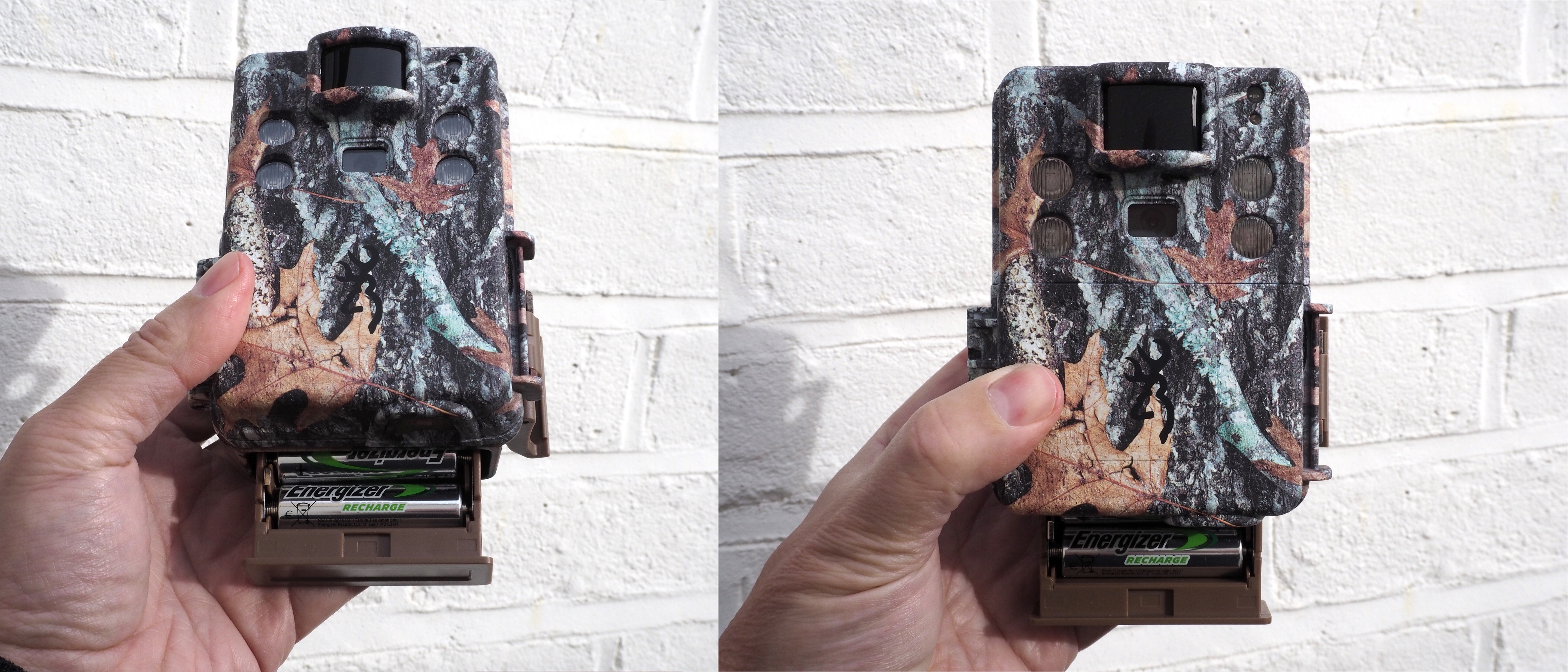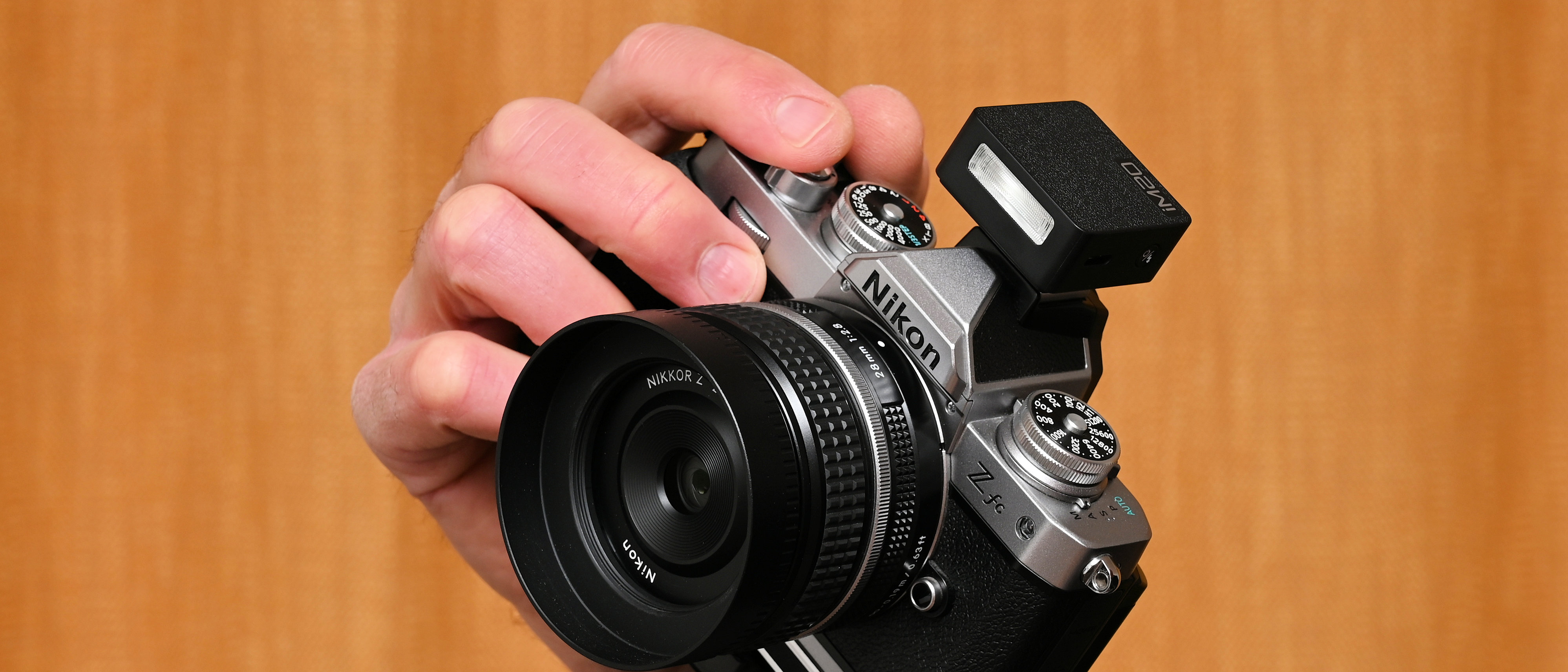Digital Camera World Verdict
The Browning Strike Force HD Pro X is another brick-like trail camera designed for remote surveillance and observation, day and night. While the operational controls are bare bones and require an initial degree of familiarization, the provided screen is, unusually in this price bracket, a color one. We’ll have to provide our own SD card (up to 512GB capacity) and six AA batteries to power it, but overall we feel this is a good value option for those looking to take their initial steps in the trail camera / remote surveillance world – or those simply wanting an affordable fuss-free device that will do the job.
Pros
- +
Affordable price
- +
Colour LCD screen
- +
12-volt external power port
Cons
- -
No 4K recording
Why you can trust Digital Camera World
The Browning Strike Force HD Pro X trail camera is shorter in stature than the typical house brick sized alternatives; to get a rough idea of its size, imagine two cigarette packets, or packs of cards, placed back-to-back. Just like rivals, however, it still requires six AA batteries for power, which, as is typically the case, are not provided out of the box. The device looks the part though, thanks to its photo print camouflaged exterior, featuring a forest floor-like covering of tree roots and fallen leaves.
What you'd potentially be buying this unit for is remote and covert surveillance and recording the movements of skittish animals that would otherwise be spooked by an obvious camera wielding human in the vicinity. So that’s the quick overview; what about the nitty-gritty?
Browning Strike Force HD Pro X: Key Features
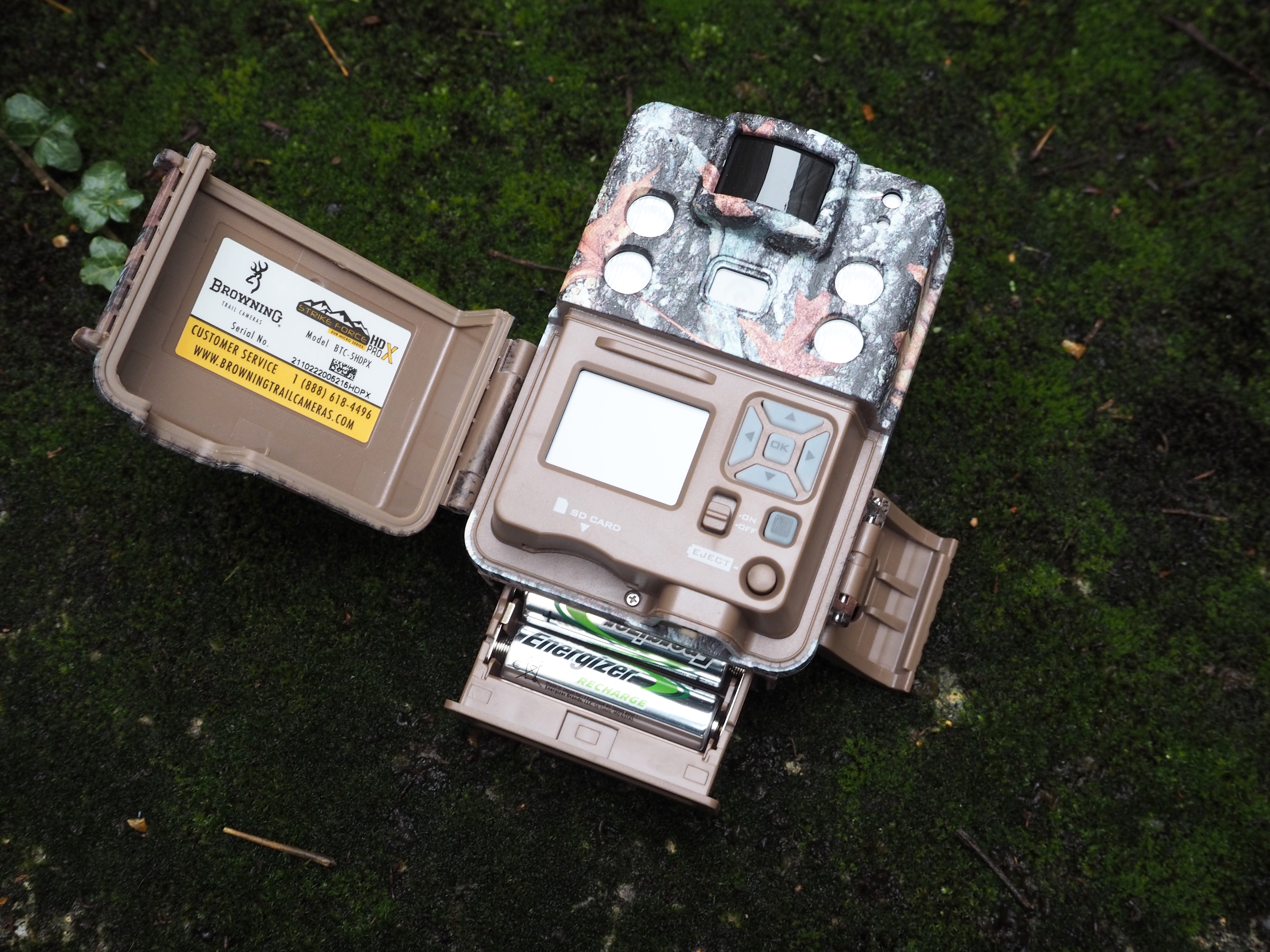
One glance at the box and we’ll be zeroing in on the core features of the Browning Strike Force HD Pro X trail camera, which include a 20-megapixel stills resolution, 1600x900 pixels video of between five seconds and two minutes in length, a 0.22 second trigger speed response time, a 0.6 second recovery time, plus a motion detection range of up to 80ft, upgrading the original camera’s more modest 55ft range. It also boasts an adjustable flash range of up to 120ft.
To select and implement its various image capture functions and settings, including interval timed single shots or multi shots, we’re gifted a minimal array of operational buttons, which when the camera is in the field are otherwise hidden under the faceplate. Included here is a 1.5-inch LCD screen, used in conjunction with the buttons alongside it to make our selections. Browning claims that potential users can capture up to 10,000 images before the 6x AAs it requires for power, which requires an additional purchase, are depleted. Of course, we’ll need something to save all of those images on – and here that is offered courtesy of the ability to insert a removable SD card. The Browning device supports up to 512GB capacity cards; a fair degree higher than the usual 32GB maximum capacity SDs supported by alternative trail cameras in its class.
Another unusual feature on this model is a steel bracket at the back of the trail camera that can be loosened to let the device tilt forward if required. While a loop for a provided strap – itself a generous 6ft in length – is included as part of said bracket, another way of securing the Browning Strike Force HD Pro X trail camera is via the use of a tripod, with a standard screw thread provided at its base. Hidden under a rubber flap is also an alternative means of powering the camera via a 12-volt external power jack.
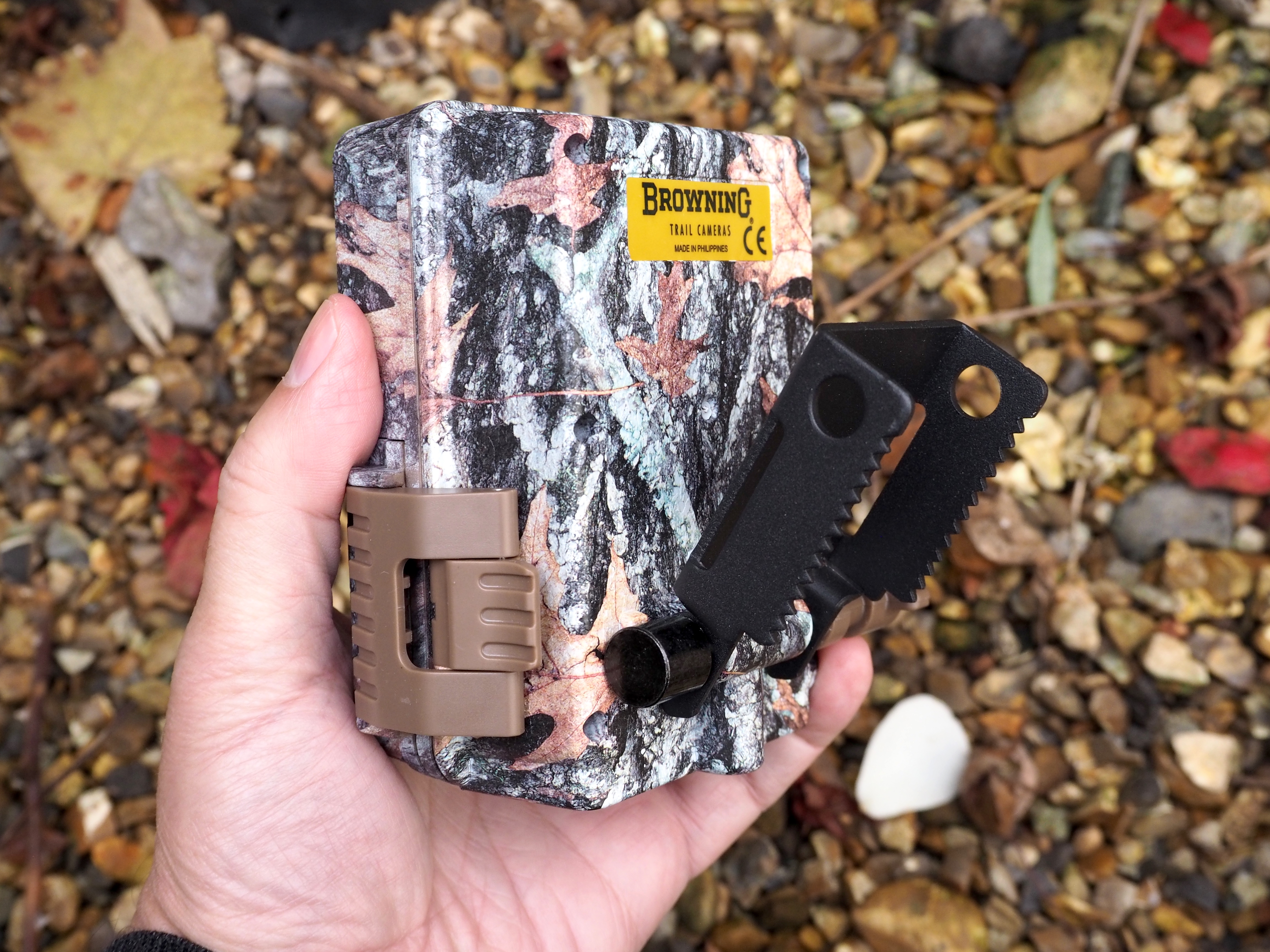
Browning Strike Force HD Pro X: Handling
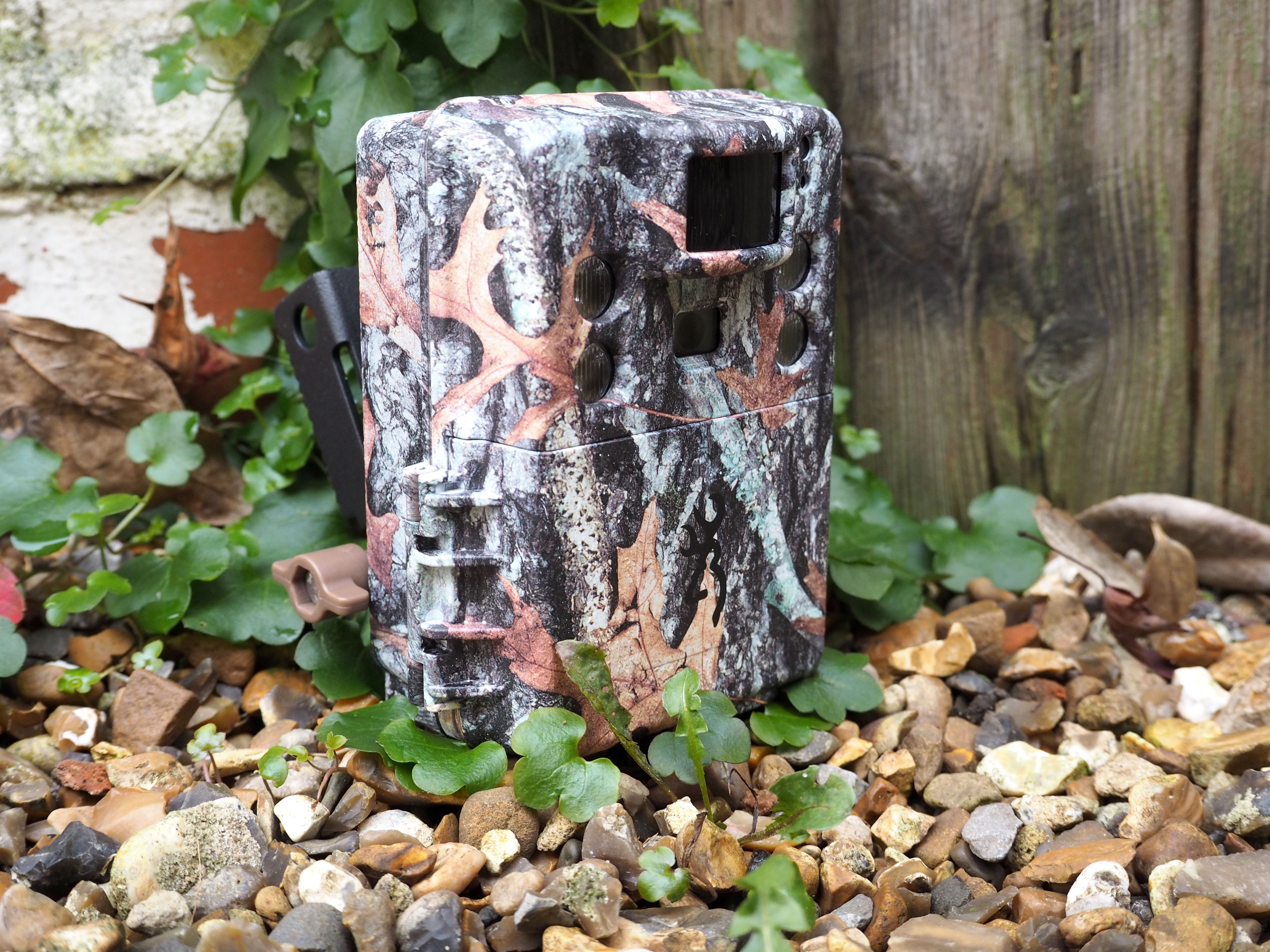
Before we can begin using the Browning Strike Force HD Pro X trail camera, we first need to source and insert 6x AA batteries, a tray for which is secreted away in the base of the model. This is ejected via a dedicated button hidden under a protective cover at the front of the device. When closed, the cover also shields the aforementioned postage stamp sized 1.5-inch LCD screen that affords the implementation of settings via a minimal array of operational controls ranged to the right of it.
Anyone who has operated a basic point-and-shoot digital camera will find the handling here fairly intuitive, although we still found ourselves consulting the manual as to how to initially set things up. Unusually for a budget trail camera, once settings have been made, the screen can display whatever is in front of the device, theoretically helping the user achieve optimum framing, or coverage of the area being marked out for surveillance. At the base of this cover protected control unit is a slot for the insertion and retrieval of an optional, yet essential, SD card. Once inserted, we just need to give the card a slight nudge to eject it; again, so reasonably intuitive.
While a strap is provided out of the box for threading through the metal tree mount bracket located at the rear of the unit, thereby attaching it to the trunk of a tree or suitable post, more unusually the angle of this bracket is adjustable – albeit to a limited extent. In practice we found that the trail camera can be angled forward so it’s pointing downwards instead of just directly ahead. Alternatively, if the trail camera is placed on a flat surface, the bracket acts as a makeshift tripod, allowing the device to be angled upwards.
The simple photographic print on the exterior of the unit also proves remarkably effective in practice, unobtrusively blending the Browning Strike Force HD Pro X trail camera in with natural backgrounds. The fallen leaves printed on its faceplate make this an ideal match for autumn.

Browning Strike Force HD Pro X: Performance

The overall build quality of the Browning Strike Force HD Pro X trail camera feels remarkably solid for the price, with only the likes of the removable battery tray feeling a tad vulnerable once removed from the interior of the unit. With six AA batteries inserted to power the device, it’s reassuringly weighty in the palm, with no discernable ‘give’ to the plastic exterior when squeezed.
Though we have to assume some form of weatherproofing since this is primarily designed as an outdoor device, the manual warns the warranty is void if the unit is ‘neglected or abused’ and actually submerged. We left the unit out in heavy rain, as is unavoidable in the UK, and though there was moisture present along the rubber sealed edge of the flip-open cover when we retrieved it, the unit itself and card we’d inserted were still working and readable. At its reasonable price point however, there was a modicum of doubt in our mind over how much repeated exposure to a wet climate and monsoon-level rain it would withstand.
Unsurprisingly, since the camera is infrared equipped, night-time images are rendered in black and white, whereas in daytime it’s color. Results resemble the kind of images we’re used to seeing from surveillance cameras on crime programs and even at full 20 megapixel resolution there is visible grain and soft edges to subjects, particularly anything in the frame that’s actually moving. So don’t expect pin-sharp results like we’re used to seeing from DSLRs or mirrorless cameras.
Happily though, the built-in motion sensor and capture capabilities here actually do work. For those who want to keep track of their image captures, the option to add an info bar at the bottom of each image is available, which stamps each picture with the basics of temperature, time and date. As ever, use of trail cameras involves a degree of trial and error – we never know quite what we’re going to get in response when we set one up, which is part of the beauty and fun of it all. In these days of instant gratification it’s still nice to be occasionally, perhaps even pleasantly, surprised.
Browning Strike Force HD Pro X: Rivals
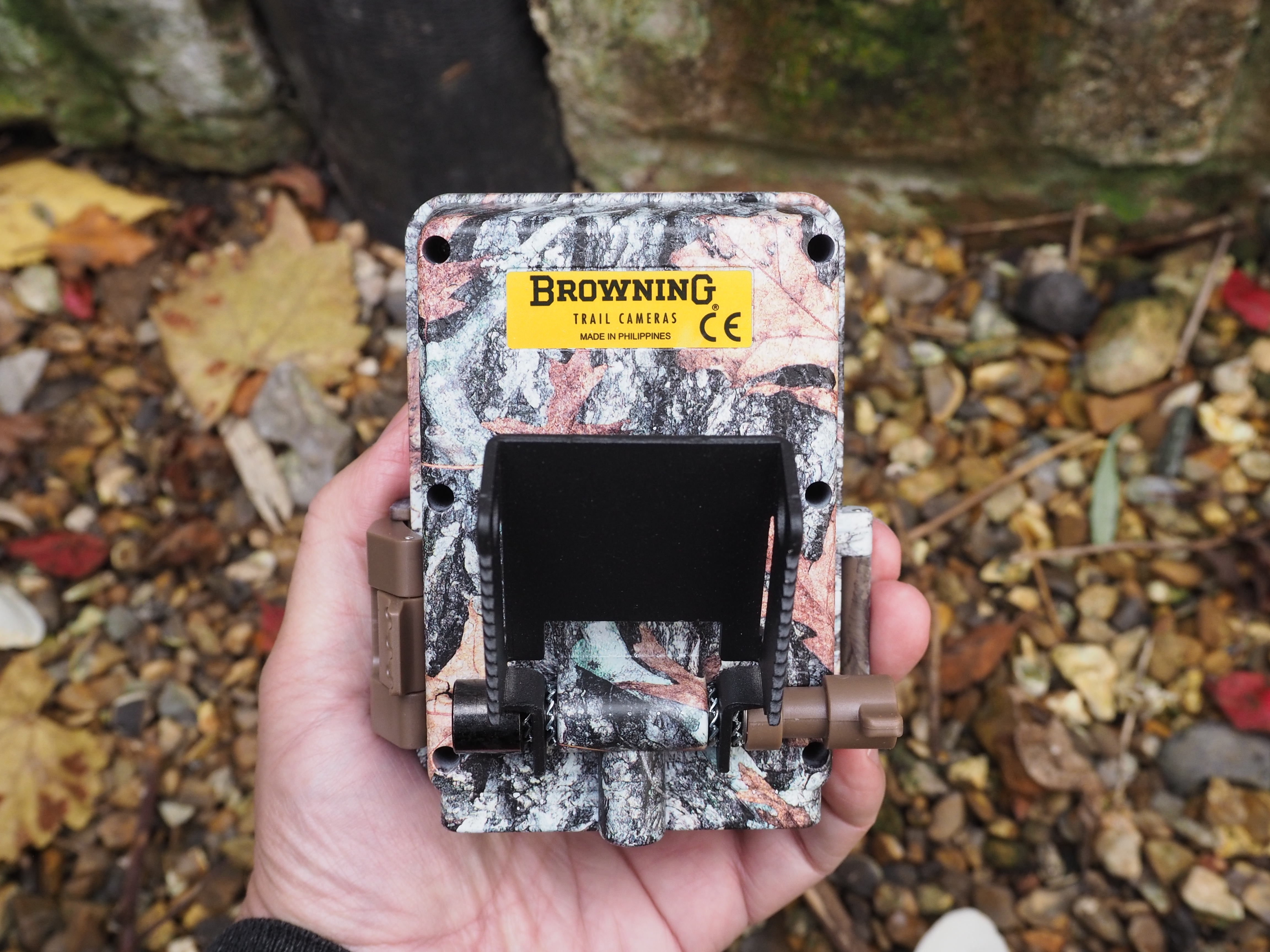
While there is a broad range of trail cameras currently available, in our experience they offer relatively similar operability, feature sets, and performance. So selection is perhaps more dependent on our budget. Other good value options to consider alongside the Browning Strike Force HD Pro X trail camera include the Bushnell Prime L20 Tan Low Glow trail camera and its bigger brother in the 32MP resolution Bushnell Core DS-4K No Glow trail camera. The latter distinguishes itself, particularly when compared against the Browning Strike Force HD Pro X trail camera, by featuring a class-leading 4K video resolution, a relatively speedy 0.15-second trigger response, as opposed to the 0.2-second trigger response here, plus twin sensors variously optimized for use in both day and night.
Additional alternatives include the Spypoint Force 20, which offers a slightly lower 70ft detection range coupled with1080x720 pixels video clips, plus, like many others, the option for shooting to a removable SD card capacity that maxes out at a modest by comparison 32GB. Perhaps closer to the Browning Strike Force HD Pro X trail camera, thanks to its 24MP stills resolution and 1080P video at 30fs, is the GardePro E6 No Glow trail camera.
This one does up the ante further however by coming with its own phone app for remote operation and being Wi-Fi and Bluetooth enabled. This is all well and good, as long as we’re planning to remain within the range of the device itself; but if we’re not then we still feel that the Browning here offers a very keenly priced alternative for those looking to pick up their very first trail camera.
Browning Strike Force HD Pro X: Verdict
We’ll need to supply our own 6x AA batteries and removable SD media card to operate the Browning Strike Force HD Pro X trail camera, but at the price of ownership being asked here we’re not complaining.
For that reason we feel it would make a great entry-level / starter option for anyone intrigued by the idea of a trail camera, or amateur nature watchers wanting a means of surveillance and, theoretically, of capturing images that couldn’t otherwise be achieved by simply standing in the same spot with a regular camera or smartphone. Further peace of mind comes via a one-year warranty.
You might also like the best cellular trail cameras, and if you're into wildlife, the best portable hides for photography and the best camera for wildlife.
Gavin has over 30 years’ experience of writing about photography and television. He is currently the editor of British Photographic Industry News, and previously served as editor of Which Digital Camera and deputy editor of Total Digital Photography.
He has also written for a wide range of publications including T3, BBC Focus, Empire, NME, Radio Times, MacWorld, Computer Active, What Digital Camera and the Rough Guide books.
With his wealth of knowledge, Gavin is well placed to recognize great camera deals and recommend the best products in Digital Camera World’s buying guides. He also writes on a number of specialist subjects including binoculars and monoculars, spotting scopes, microscopes, trail cameras, action cameras, body cameras, filters and cameras straps.
